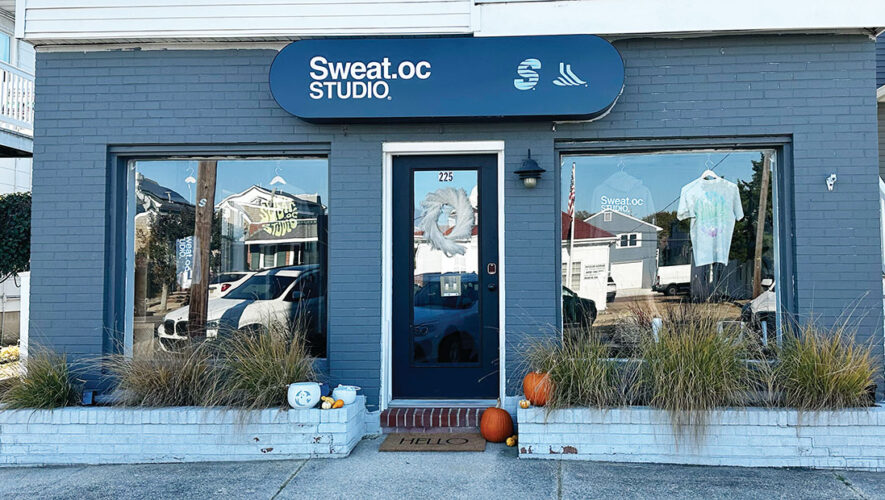SOMERS POINT — Plummeting enrollment combined with decreasing state aid has forced the Somers Point School District to make some tough decisions while formulating its 2023-24 budget.
The $23,341,235 spending plan, which is only in its preliminary stages, includes a 2 percent tax levy increase coupled with staffing cuts, according to a presentation by Superintendent Michelle CarneyRay-Yoder and Business Administrator Mary Conroy.
But there may be some help on the way. The state Senate approved a bill Monday that would restore $102.8 million and provide a one-time payment to districts that are losing funding for the 2023-24 school year. The Assembly Education Committee was expected to meet March 23 to discuss its companion bill.
According to the bill, about two-thirds of the $157 million that was cut statewide would be restored. The legislation would provide 65 percent of the aid that was lost by districts earlier this month and would be considered adjustment aid in the school funding formula.
The budget was presented March 16 to the Board of Education, which voted to approve sending it to the county superintendent of schools.
The general fund is $15,933,299, special revenue fund $6,474,027 and debt service fund $933,909. The tax levy would be $10,660,625 and the tax rate, which has remained steady at 98.4 cents since 2020-21, was unavailable.
The 2022-23 budget included a $15,802,849 general fund and tax levy of $10,392,770.
The presentation included a slide showing the district’s enrollment history dating back to 2008. There were 1,204 students in fall 2009 and just 680 in fall 2022, a loss of 524 students.
“I can’t wait until I see the trend going in the opposite direction, that’s my hope,” CarneyRay-Yoder said, noting there are 98 preschool students who do not factor into aid for the entire district.
At the same time, state aid has fallen dramatically under the Student Funding Reform Act of 2018. According to the presentation, the district received $5.79 million for 2020 and just $3.3 million for 2024, including a loss of $1.1 million for 2023-24. That’s $303,816 less than the business administrator anticipated last month, before the figures were released, and a total loss of $2,448,859 since 2020.
“I had the ‘pleasure’ on my first budget that I’ve ever done as a superintendent to have to deal with a significant cut and it has been every year since,” said CarneyRay-Yoder, who joined the district in 2018 and had her contract renewed in 2021.
The district could not provide a figure for the anticipated tax rate, saying an audit expected in December was received last week.
Included in the budget is funds for the creation of new bathrooms to accommodate preschool students. The superintendent said they applied for a grant and will build them using capital reserve funds and have them ready for September, anticipating refilling that coffer with the grant.
“We are trying to offset a lot of what we do with grant funding,” CarneyRay-Yoder said.
The administration is also recommending staff cuts through layoffs and attrition. Three members who retired and four who resigned will not be replace, while eight others from the teaching staff, related services and various department would be let go.
“What that means is seven less cuts we have to make,” CarneyRay-Yoder said.
Other cost-saving measures under consideration are two shared-service opportunities, leasing the New York Avenue School and hiring substitutes internally rather than paying for a service provider.
Josh Tostevin, president of the Somers Point Education Association, questioned how the staff cuts would be better for the students, particularly those in special education.
“We understand and recognize the daunting task with which you are faced in balancing a budget amongst adverse financial circumstance. However, we are alarmed at some of the decisions being made that negatively impact the students of Somers Point, particularly our most vulnerable,” he said during public comment.
He said proposed cuts target staff on the child study team, special education department and the MTSS structures.
Tostevin asked why the district used Elementary and Secondary School Emergency Relief Fund money to hire several teachers “if maintaining these positions was unlikely, especially given the grim funding outlook for the following several years.”
“While these hires enabled the establishment of our MTSS structure, we are now faced with having to change the structure using less staff members,” Tostevin said.
He said there has been a “troubling trend in the past couple of years” in which individual education plans (IEPs) have been “rewritten to give students less time for special education services.”
“Next year we have fewer special education teachers working in our schools, resulting in the remaining teachers having the burden of extra students, larger caseloads and more IEPs. How is this better for students?,” Tostevin asked. “How will these teachers being given the necessary time it takes to modify instruction and write the IEPs for so many students?”
CarneyRay-Yoder said the MTSS structure provides individualized instruction for every student, replacing the need for IEPs.
Tostevin said the cuts also include a school psychologist.
“This is astonishing given our students’ needs as we continue to grapple with social and emotional issues post-pandemic. Why won’t you recognize this staff member could be and should be providing crucial intervention and counseling services?” he said, adding the district is in dire need of paraprofessionals.
CarneyRay-Yoder said she was “disheartened to see that the SPEA is here today for the first time to discuss their budget concerns at a board meeting, rather than meeting with me first, knowing that the impact that staff and salaries has on our budget.”
“As a school district, our priority is educating all students of Somers Point. The district’s goal is to provide the resources necessary to help our students make educational progress and become well-rounded young community members,” she said. “However, it is becoming increasingly difficult to provide appropriate support for our students when our state aid continues to diminish.”
She said the district has lost nearly $2.5 million in aid over four years.
“With an operating budget that is over $15.9 million, this is significant and debilitating. The cuts have proved to have a direct impact on our district. For the past two years, the district has seen significantly declined enrollment, especially coming out of COVID pandemic.
“We have used grant funding to add staff to support our students, purchase online and physical materials to align curriculum, provide instructional coaching to help our teaching staff and add mental health services.
“With our students as a primary focus, we have balanced the budget and maximized staff without impacting student programs.”
CarneyRay-Yoder said district class size is between 10 and 14 students and the cuts would bring that number to 19 to 22 students.
“Our students will still receive the programs and support they need, that is our priority as a district,” she said.
Presentation of the complete budget and a public hearing are scheduled for April 27.
By CRAIG D. SCHENCK/Sentinel staff


